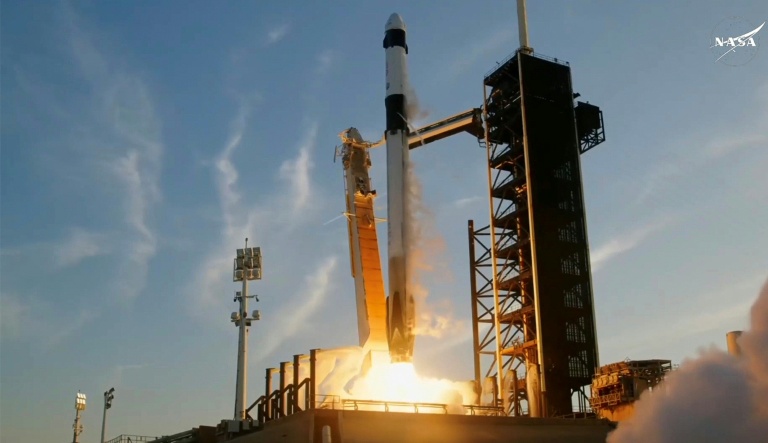Chinese spacecraft assembly discovers new bacterium

This screengrab image from NASA’s live broadcast shows the SpaceX Falcon 9 rocket with the Crew Dragon capsule blasting off from the Kennedy Space Center in Florida bound for the International Space Station – Copyright NASA TV/AFP –
As spacecraft are assembled and in advance of space missions, it is important to minimise microbial contamination and to understand those microorganisms that might be hardy enough to survive going into space. Furthermore, understanding the characteristics of microbes during long-term space missions is important for safeguarding the health of astronauts and maintaining the functionality of spacecraft.
This is for different reasons, most notably the risks of a bacterium surviving, say a mission to Mars, contaminating the Martian surface, and then coming back to Earth in a mutated form. Both the ecological systems on Earth and Mars could be adversely impacted.
This has placed an emphasis upon the scientific understanding around the potential of biological objects and structures to adapt and survive in specific space conditions. This includes characterising which species can survive and tolerate such factors as vacuum, solar radiation, cosmic radiation, and temperature changes.
Chinese researchers were looking to further their understanding of the characteristics of microbes during long-term space missions when they isolated Niallia tiangongensi from the surface hardware on the space station. This bacterium has been declared to be a newly discovered species.
Members of Niallia are previously species belonging to Bacillus, which means the organism can form spores (endospores) enabling it to survive in extreme environments. The name Niallia was named after the British microbiologist Professor Niall A. Logan (Glasgow Caledonian University).
Microorganisms, or ‘space residents’, which cohabit with humans in the space environment, must be very hardy and adapt to challenging conditions such as microgravity, confinement, limited resources and low-dose radiation. By forming spores, specific microbes have the ability to become dormant in extreme environments. Once they get heated up again, and there are available nutrients, they can come back to life.
Understanding these microorganisms is essential for safeguarding the health of astronauts and maintaining the functionality of spacecraft.
In a recent study, a Gram-positive, aerobic, spore-forming, rod-shaped strain termed JL1B1071T was isolated from the surface of hardware on the China Space Station.
Subsequent analyses showed this strain belongs to the genus Niallia, with its closest relative being Niallia circulans (the reference culture being ATCC 4513). The genome of JL1B1071T is 5 166 230 base pairs in size. The major cellular fatty acids were anteiso-C15:0 and iso-C15:0. This organism demonstrates a unique ability to hydrolyse gelatin, suggesting that it can utilize gelatin as a substrate in nutrient-limited environments.
Subsequent genomic analysis of JL1B1071T revealed two conserved signature indels in the GAF domain-containing protein and DNA ligase D protein, which are specific to the genus Niallia.
Additionally, structural and functional differences in proteins were identified, which may enhance biofilm formation, oxidative stress response and radiation damage repair, thereby aiding its survival in the space environment.
Based on phenotypic, physiological and chemotaxonomic characteristics, as well as genome annotation, strain JL1B1071T was considered a novel species within the genus Niallia and scientists proposed it to be named Niallia tiangongensis sp. nov.
The research appears in the International Journal of Systematic Microbiology, titled “Niallia tiangongensis sp. nov., isolated from the China Space Station.”
Chinese spacecraft assembly discovers new bacterium
#Chinese #spacecraft #assembly #discovers #bacterium







